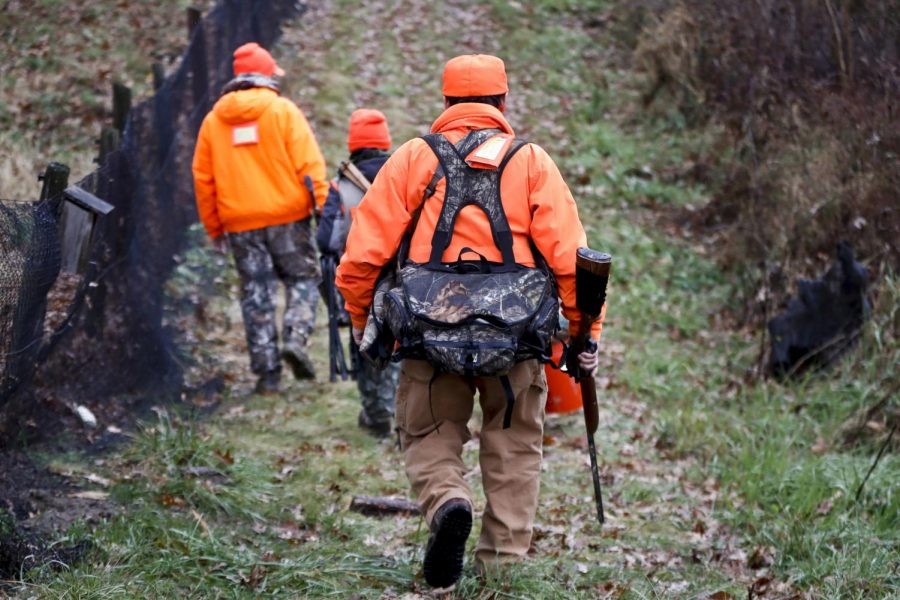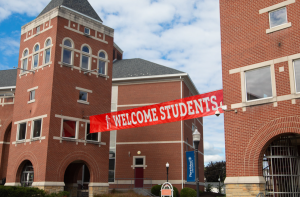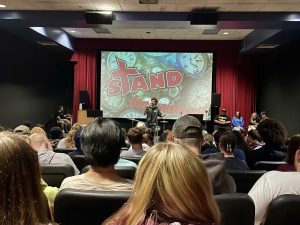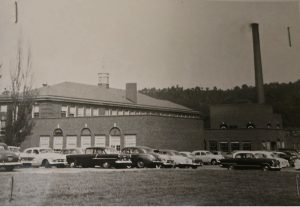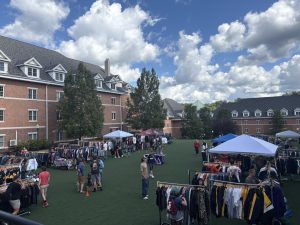Hunting culture in Southwestern Pennsylvania
A first-person account and reflection of deer hunting in the region
Santo Cerminaro, right, follows his son, Dominick Cerminaro, left, and grandson, Santo Cerminaro, 11, into the woods to go deer hunting on the first day of regular firearms deer hunting season, in most of Pennsylvania, Monday, Nov. 26, 2018 in Zelienople, Pa.
December 12, 2018
For as long as I can remember deer hunting has been a massive part of my life, even though I have never personally participated. For my uncle, cousins, and grandfather the first days of the hunting season are the most exciting of the entire year.
The phenomena of hunting may seem barbaric to some but growing up it was just an average part of life for my friends, family, and neighbors. In the area around California, PA hunting has developed from its own culture.
I consider myself to be lucky to be from an area where I spent much of my youth coveting cricks, wondering the woods, barefoot summers, in awe of the world around me. The wildness of these experiences too was shaped by the middle of September when archery season begins and until the cold overtakes in December.
I do not endorse hunting for sport of any kind, the act of killing an animal just for the sake of doing so is not something I could ever possibly get behind. As a child, the thought of animals or specifically “Bambi” dying horrified me.
Thus, a lengthy discussion ensued between my family and me as to why deer hunting is something held in such regard almost as a tradition or as I know recognize it as a way of life for many people.
I listened thoughtfully as my grandfather talked about his friends and the deer they had gotten that year.
This practice wasn’t just something my family started doing but was shared by a community impacted by the diminish industry that was first coal, then steel, and now oil.
In the historical context, it was explained to me in the way of passed down memories. That many families working for coal companies would be paid only being able to use their funds in the company store. Often causing struggle, the act of deer hunting provided a means of producing food.
The same can be said as those generations shifted to steel as the mill in Allenport, PA provided good jobs for the area in which workers under their union fought for fair pay, often striking. Deer meat provided security in these times of uncertainty.
As time has progressed, that meaning for hunting has shifted. There are no longer coal company stores, as the mill closed so did the strikes, and oil has been flowing across the state providing jobs to those generations shifted from one industry to another.
Above all hunting deer, is something that was taught should be done with the full respect of the animal. My grandfather made this clear to me from a young age the deer that are hunted provide and have provided food, and they are not merely a trophy.
However, another explanation granted to me by the hunters I asked about why hunting persists was the means of overpopulation amongst deer. It’s a subject that has been fiercely debated as a good reason for deer hunting to continue.
In 2017, the Pittsburgh Post-Gazette public an article titled “‘Cute’ urban deer eat tons of vegetation, spread disease and damage ecosystems” that provided a detailed account of what happens when deer population’s remain unchecked. Including, deaths the animals and damage to the ecosystem of Pittsburgh, an area that cannot be hunted due to its dense city population.
This brings me to the culture that has developed as a result of the generations of hunting in the area. Home’s can often be found with deer heads on the walls often kept as a reminder of giant bucks. While these are trophies to some degree, if money is spent to put a deer head on the wall it’s for a reason. Either because of its size (more meat) or a particular sentiment.
Camo is worn all year round, not just in the time spent out in the forest. Many of those who participate are working class people. The conversations at Thanksgiving consist of mapping out where they will be going on Monday. Schools canceled for hunting season.
Hunting in the area is a deep-rooted part of the culture, of a wildness that has come to be tamed but yet still carries sentiment to its participants. Many fond memories can be found in my family about the first 8 point buck or the deer sticks that will be made this season.
It’s not just a barbaric act, and it is a tradition that is done with respect and for reasons that hold importance in the people in and around the California, PA region.

